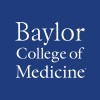
Warfighter Head Injury Study
Head InjuryThis study will examine the long-term outcome of brain injuries, the effects of treatment on outcome and the effects of brain injury on people s behavior and abilities. Men and women between 18 and 75 years of age who served in combat in the Iraq war may be eligible for this study. It will compare test results in those who sustained a traumatic penetrating or blast-related brain injury during combat with those who did not. Participants undergo the following procedures over a 5-day period of testing that lasts about 6 hours a day: Medical history and physical examination. Blood test for genetic analysis. Electroencephalography (EEG) to measure the electrical activity of the brain. MRI or CT scans of the brain to look at the structure and blood flow of the brain. Functional near-infrared spectroscopy (fNIRS) to monitor blood flow in the front part of the brain blood by measuring changes in near-infrared light. Neuropsychological testing, including questionnaires, pen-and-paper or computerized tests, and performance of simple actions to measure brain function, language, memory and other cognitive abilities..

A Comparison of Two Target Mean Arterial Pressures in the Resuscitation of Hypotensive Trauma Patients...
Hemorrhagic ShockTrauma5 moreThe goal of this study will be to determine if a lower than normal blood pressure during surgery for bleeding in the abdomen or chest will result in decreased bleeding and decreased chance of death.

Efficacy of Pharmacological Treatment of Working Memory Impairment After Traumatic Brain Injury:...
Traumatic Brain InjurySevere Traumatic Brain InjuryThis study is designed to examine the effects of a wake-promoting agent (Modafinil) on working memory (WM) in persons with moderate to severe TBI utilizing a double blinded placebo controlled methodology. Our approach is to evaluate participants with BOLD fMRI and a limited neuropsychological battery to examine WM performance before and after pharmacological intervention. Hypotheses Because increased cognitive effort (as a function of decreased efficiency after TBI) is presumed to underlie fMRI activation dispersion that is seen during central executive WM tasks, we anticipate an attenuation of cerebral activation in prefrontal cortex during pharmacological intervention with Modafinil when compared to placebo administration on the mPASAT and vigilance testing. There will be a correlation between the decreased dispersion of the fMRI signal on scans and improvement in neuropsychological measures when individuals are on Modafinil that is not seen when they are taking placebo.

Use of Beta Blockers in Elderly Trauma Patients
Multiple TraumaCardiovascular Diseases1 moreAdvances in medical care have increased the proportion of elderly Americans and enabled them to remain more physically active. This has resulted in an unprecedented increase in the number of geriatric patients admitted to trauma centers. The elderly constitute 23% of trauma center admissions, but 36% of all trauma deaths. This disproportionately high mortality is attributable to a higher prevalence of pre-existing conditions, particularly, cardiac disease. Multi-system injuries result in critical cardiac stress. Although beta-blockade has been shown to decrease morbidity and mortality in patients at risk for myocardial infarction after elective surgery, their use in trauma patients with potential underlying cardiac disease has not been previously studied. We hypothesize that routine administration of beta-blockers after resuscitation will reduce morbidity and mortality in elderly trauma patients with, or at risk for, underlying cardiac disease. This study is a randomized, prospective clinical trial. One cohort will receive routine trauma intensive care, and the other, the same care plus beta-blockade after completion of resuscitation. The primary outcome will be mortality. Secondary outcomes include MI, length of stay, organ dysfunction, cardiac, and other complications. Changes in outcome may not be due to reduction in myocardial oxygen demand and heart rate. Laboratory studies demonstrate that circulating inflammatory cytokines contribute to cardiac risk in trauma patients, and their production is influenced by adrenergic stimulation. We will measure circulating IL-6, TNF alpha, IL-1beta, and measure NF-kB and p38 MAP kinase activation in peripheral blood leukocytes, and determine the effect of beta-blockade on the production of these inflammatory markers. Finally, the wide variation in patient response to beta-blockers is attributed to genetic variability in the adrenergic receptor. Therefore, we will identify single nucleotide polymorphisms (SNPS) within the beta-adrenergic receptor, and determine their effects on mortality and response to beta-blockade. This study will provide the first randomized, prospective trial designed to reduce morbidity and mortality in elderly trauma patients at risk for cardiac disease. The laboratory and genetic component will provide additional insights that may explain treatment effects, lead to new therapeutic strategies, and have the potential to lead to additional areas of investigation.

Effect of SACCHACHITIN on Healing of a Chronic Wound
WoundsSACCHACHITIN gel, prepared from the waste residue of the fruiting body of Ganoderma tsugae, was used in a previous study to enhance skin wound healing in animal models. In the present study, the effects of the gel on the activity of matrix metalloproteinases (MMPs) and vascular endothelial growth factor (VEGF) as well as on the healing of skin wounds in humans are estimated by a clinical trial. The hypothesis regarding the poor healing of the wound is the over-expression of MMP and the inhibition of the angiogenic factors. From the previous animal study, the effect of SACCHACHITIN was to inhibit the activity of MMP and stimulation of VEGF and we try to prove the effect over the human wounds from this clinical trial. Patients with a poorly healed wound, in which skin graft is clinically indicated, are included in this study. The exudates from the wound are collected and analyzed for the activity and concentration of VEGF and MMP. The change of the healing process is recorded. Positive results are expected from the clinical trial and the patients will get another choice for the treatment of the chronic wound other than skin grafting.

Efficacy and Safety Evaluation of PC-SOD for Injection in Reducing Myocardial Reperfusion Injury...
Myocardial Reperfusion InjuryThe current study aims to evaluate different doses of PC-SOD injections for efficacy and safety in comparison to placebo, in order to provide a basis for future clinical trials in terms of experimental design and dose selection.

Efficacy of Paste Type Acellular Dermal Matrix(CG Paste) in Chronic Wound Healing
Chronic WoundThe purpose of this study is to evaluate the efficacy and safety of wound sizing and completeness in chronic window treatment, and to confirm the superiority of area reduction in CG Paste and form-dressing as compared to form-dressing alone groups and CG Paste and form-dressing companion groups.

Non-inferiority Evaluation of Multicenter, Randomized, Single-blind, Parallel-controlled Clinical...
Shoulder Instability Rotator Cuff InjuryMulticenter, randomized, single-blind, parallel-controlled non-inferiority assessment for safety and efficacy of rotator cuff injury and/or shoulder instability surgery

Cyclical Topical Wound Oxygen Therapy (TWO2) in the Treatment of Chronic Wounds
Evaluate the Efficacy of Cyclical Topical Wound Oxygen Therapy in the Treatment of Chronic WoundsTo evaluate the efficacy and clinical satisfaction of topical oxygen therapy (LOT) in chronic wounds (including patients and medical staff), and explore its possible mechanism.

Trial for the Early Identification of Acute Kidney Injury
Acute Kidney InjuryPrevise is a novel, software-based clinical decision support (CDS) system that predicts acute kidney injury (AKI). Previse uses machine learning methods and information drawn from the electronic health record (EHR) to identify the early signs of acute kidney injury; by doing so before the clinical syndrome of AKI is fully developed, Previse can give clinicians the time to intervene with the goals of preventing further kidney damage, and decreasing the sequelae of AKI. It has been demonstrated in retrospective work that Previse can predict AKI with high accuracy at long prediction horizons, but the tool has yet to be validated in prospective settings; therefore, in this project, the clinical utility of Previse will be assessed through an individually randomized controlled multicenter trial.
